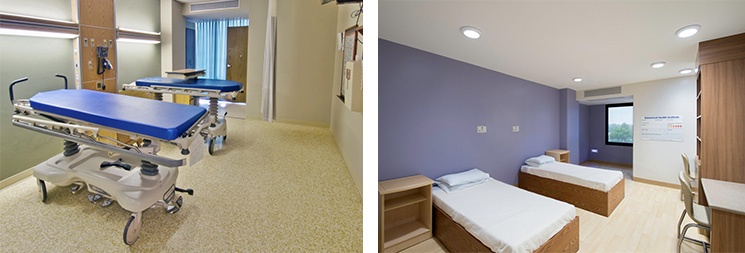The US healthcare landscape is ever changing due to the Affordable Care Act (ACA). Modifications to the law change healthcare delivery and provide access to insurance coverage to a large population of the previously uninsured. One of the largest underserved populations includes those with mental illnesses. In 2013 alone, an estimated 43.8 million US adults (18 or older) had a diagnosed mental illness. Mental illness is a condition in which alterations to thinking, mood or behavior (or a combination thereof) are associated with impaired functioning and/or distress.

Research shows that mental illnesses can have a strong influence on the occurrence, successful treatment and course of chronic illnesses including diabetes, cancer and cardiovascular disease, as well as risk behaviors like physical inactivity, smoking, excessive drinking and obesity (according to the Centers for Disease Control and Prevention). This leads to an increase in visits to healthcare providers and emergency departments (EDs). According to the National Association of State Mental Health Program Directors, many states reduced their mental health spending by $4.35 billion between 2009 and 2012.[1] Due to all the funding cuts, “hospitals are closing psychiatric units, and outpatient services are contracting or closing altogether.”[2]
The shortage of mental health facilities is adding to the increased demand on EDs, many of which provide treatment in facilities not designed to accommodate the special needs of a behavioral health patient. Unfortunately, cutting mental health program funds has made this already underserved service line even more strained.
What can health systems do to help alleviate the pressure?
Changing Established Physician Roles
“Integrating behavioral medicine with the primary care curriculum is a paradigm for incorporation of several disciplines into primary care . . .”[3] By combining Primary Care and behavioral health services, health systems create a more patient-centric and direct way to manage healthcare. The obvious benefit of this approach is creating a collaborative, multidisciplinary team; however, this also requires training for primary care physicians so they can better address behavioral health issues.
Increase or Modify the Infrastructure
Brick and mortar is the most expensive and slowest way to solve a problem. However, a health system can reduce the cost if it is able to renovate underutilized areas instead of building new. Behavioral health ranks among the top five service lines that are well suited for repurposing a hospital’s underutilized space, according to Health Facilities Management magazine’s 2015 Hospital Construction Survey. With current market trends showing an increase in outpatient and ambulatory care, hospitals can transform their underutilized inpatient beds into behavioral health units.
Understand the Current Mental Health Crisis and Plan Strategically
Since ED treatment rooms aren’t appropriate for mental health evaluations, systems could provide a Comprehensive Psychiatric Emergency Program (CPEP). The CPEP is where evaluation, intervention, treatment and referrals occur for psychiatric emergencies. A CPEP unit’s design should include certain space and aesthetic considerations.

As with any medical condition, there is a wide variety of reasons patients seek care. An irritable patient needs a quiet environment. Finish colors and patterns should help create a calming atmosphere, and the patient spaces shouldn’t be adjacent to high-activity areas. A paranoid patient could be at high risk for elopement. The unit should provide multiple security levels to prevent easy access to an exit. The designer will need to work with the staff and the local AHJs to create a secure environment that doesn’t violate life safety regulations. An agitated patient may require restraint or seclusion. All materials and furniture within the unit should be ligature-resistant. A suicidal patient requires a space that eliminates all “sharps” and self-harm hazards.
There’s a fine line between required patient observation by staff and the patient’s privacy. The unit design should allow for observation of the entire area from a central location. Use of windows or cameras can assist with this requirement. The design should accommodate appropriate levels of safety, incorporate access to natural light and provide amenities that promote healing.
As systems build strong connections to the community and promote mental health services, the number of inpatient psychiatric admissions may decrease. Early identification of needs through primary care physician training, coupled with robust interventions will benefit the community at large and lead to healthier ways of life in a supportive atmosphere.
{{cta(‘0f973b60-8ba8-4d67-a699-953d91e13e76′,’justifycenter’)}}
[1] Modern Healthcare, “Reform Update: Flood of new patients worries mental health workers”, August 12, 2014
[2] Health Affairs, “The Quiet Crisis in Mental Health Services”
[3] Health Affairs Blog, “Integrating Behavioral Medicine into Primary Care GME: A Necessary Paradigm for 21st Century Ambulatory Practice.” April 24, 2015
This post was written by former Array employee, Dwight Young.




